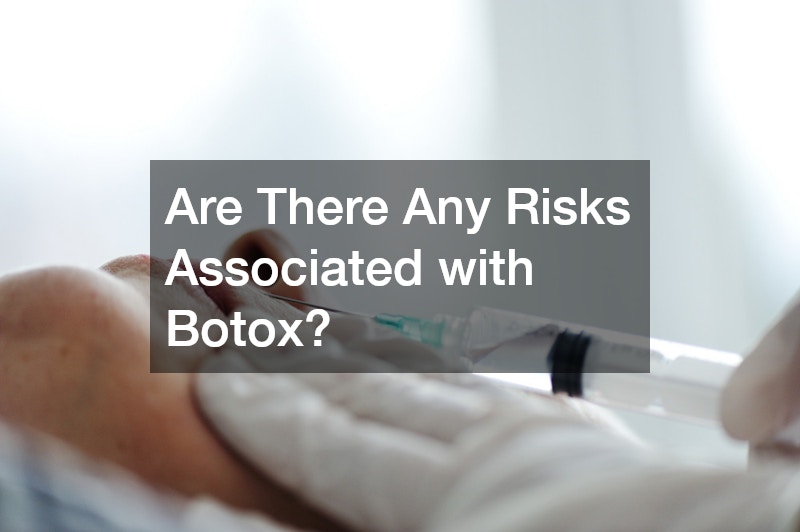Botox has become increasingly popular as a cosmetic treatment option for fillers. Its benefits, such as quick results and minimal side effects, make it an appealing choice for a wide range of age groups looking to enhance their appearance.
People are turning to Botox not only for its aesthetic benefits but also for its ability to improve self-esteem and confidence. It offers a non-invasive solution to address wrinkles and lines, making beauty maintenance more accessible.
The demand for Botox is growing rapidly, with more practitioners offering this service and new clinics opening up to cater to the increasing interest. Its cost-effectiveness compared to surgical options also adds to its growing popularity.
What is Botox and How Does it Work?
Understanding Botox
Botox is derived from a bacterial toxin known as Botulinum toxin, originally utilized in the medical field before gaining popularity for cosmetic use. Its implementation as a wrinkle reduction treatment has roots dating back to the late 20th century.
In cosmetic terms, Botox is used to smooth out facial wrinkles and fine lines, providing a more youthful appearance. Its non-surgical nature makes it a preferred option for many seeking subtle enhancements.
The development of Botox as a cosmetic product has undergone significant advancements, ensuring safety and effectiveness. Its ease of use and minimal recovery period also attract a diverse user base.
The Mechanism of Action
Botox works by temporarily paralyzing the underlying muscles responsible for expressive movements. When injected, it blocks neurotransmitters, preventing muscle contraction and consequently reducing the appearance of wrinkles.
This blocking of neurotransmission is key to its effectiveness in creating smoother skin surfaces. Over time, the muscles adapt to this change, often leading to lasting visual improvements even after the drug wears off.
The temporary paralysis achieved by Botox is selective, targeting only specific areas. This precision ensures that while wrinkles are diminished, users retain natural facial expressions.
What are the Benefits of Using Botox for Fillers?
Long-Lasting Effects
One of the main benefits of Botox is its long-lasting effects compared to other fillers. Treatments typically last between three to six months, providing extended periods of youthful skin.
Although repeat treatments are necessary, the longevity of each session makes Botox a cost-effective choice. Users appreciate the consistent results without the need for frequent visits.
On top of its immediate effects, regular Botox use may lead to long-term improvements in the appearance of skin. This cumulative benefit adds to its appeal among consistent users.
Minimal Downtime
The recovery process with Botox is straightforward, with most individuals resuming regular activities immediately after treatment. This minimal downtime is a significant draw for busy professionals and social individuals.
Unlike surgical procedures that require weeks of recovery, Botox’s minimally invasive nature ensures users can quickly return to their routines. This convenience has contributed to its rising popularity.
The procedure itself is quick, often completed within a lunch break, with results becoming apparent within a few days. This ‘lunchtime procedure’ flexibility makes Botox particularly appealing to those with tight schedules.
Who is a Suitable Candidate for Botox?
Ideal Age Range
Botox is most often sought by individuals in their 30s to 50s, as this age group starts to experience more persistent wrinkles. However, preventative treatments are becoming popular among those in their late 20s.
While most users fall within this median age range, older and younger individuals are steadily considering Botox to maintain or achieve a youthful appearance. It offers customizable solutions for a variety of age-related concerns.
Today’s trend towards preventative aging has led to an increase in younger users opting for Botox, hoping to delay the appearance of deep-set wrinkles. Early intervention is a key factor for this demographic.
Health and Medical Considerations
Candidates for Botox should generally be in good health and free from specific allergies or neuromuscular conditions. Consulting with a healthcare professional beforehand ensures proper eligibility and minimizes risks.
Pregnancy and breastfeeding are notable contraindications for Botox use, and individuals with certain skin conditions may also be advised against the treatment. Personal health assessments are vital before proceeding.
In rarer cases, individuals with underlying muscular or nerve conditions may experience adverse effects from Botox. A careful medical evaluation helps in identifying and managing such risks.
Are There Any Risks Associated with Botox?
Common Side Effects
Post-treatment side effects, although generally mild, can include swelling, redness, and bruising at the injection site. These effects are temporary and usually resolve within a few days of treatment.
Some users might experience a headache or flu-like symptoms shortly after a session. These symptoms are generally self-limiting and improve with simple at-home measures.
While rare, more serious side effects can occur, such as drooping eyelids or asymmetrical facial features. Selecting an experienced practitioner significantly reduces these risks.
How to Minimize Risks
Choosing a licensed and experienced practitioner is crucial to minimizing potential risks associated with Botox. Proper technique and understanding of facial anatomy significantly decrease the likelihood of complications.
Patients are advised to avoid alcohol and any blood-thinning medications before the procedure to reduce bruising risks. Following post-care instructions also enhances recovery and treatment success.
A thorough consultation and tailored treatment plan based on individual needs ensures not only effectiveness but also safety during and after the procedure. Personalized care is a key component of achieving desired results.




